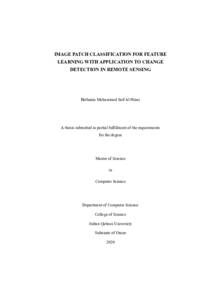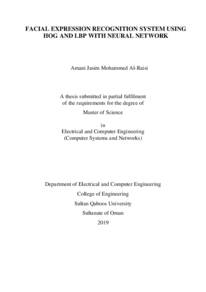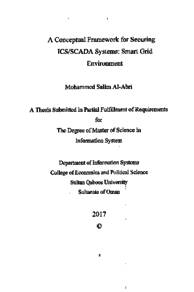Document
Image patch classification for feature learning with application to change detection in remote sensing.
Publisher
Sultan Qaboos University.
Gregorian
2020
Language
English
English abstract
With the popular use of remote sensing satellite images, a huge research has been
conducted to solve the problem of change detection (CD) from bi-temporal remote
sensing images. The improvement of the final result depends considerably on the
method used to extract the features of the pairs of images.
The development of machine learning (deep learning) has largely contributed to the
design of features by learning the hierarchical representation in an unsupervised
manner directly from data without human intervention. This approach effectively
captures middle and upper-level representations.
In this thesis, we propose a new semi-supervised change detection technique for
unlabeled bi-temporal remote sensing images based on deep convolutional neural
networks (CNN). The goal is to produce a change detection map directly from two
images using CNN. First, one of the two images (usually the images before change) is
divided into patches of the same size that will be classified by CNN later. Patch
classification ensures that features extracted from patches are as discriminating as
possible. Then the trained CNN will be used to extract the features of patches of the
second image. The assumption is that the same unchanged area is expected to have
relatively similar CNN features in both images. Consequently, the difference between
the features of the same unchanged area is small compared to that of the modified area.
Experiments are carried out on three different real datasets. We used Kappa Coefficient
(KC) and F score to compare the performance of our proposed method with three
different change detection techniques, Absolute Difference, ResNet and VGG19. The
results obtained by our proposed method show the superiority of the method, which
outperforms all the other methods and achieves the best F-score and KC on all the
datasets.
Member of
Resource URL
Arabic abstract
مع الاستخدام الشائع لصور الاقمار الصناعية للاستشعار عن بعد, تم إجراء بحث مكثف لحل مشكلة اكتشاف التغيير )CD )لصور الاستشعار عن بعد النقطية. و يعتمد تحسين النتيجة النهائية اعتمادًا كبي ًرا على الطريقة المستخدمة لاستخراج الميزات من أزواج الصور. ولقد ساهم تطور التعلم االلي )التعلم العميق( بشكل كبير في تصميم الميزات من خالل تعلم التسلسالت الهرمية مباشرة من البيانات بطريقة ال تخضع لالشراف المباشر و دون تدخل بشري. هذا النهج يلتقط بفعالية التمثيلات المتوسطة والعليا. في هذه الرساله ، نقترح طريقة جديدة لاكتشاف التغيير في صور الاقمار الصناعية باستخدام الشبكات العصبية العميقة )CNN .)الهدف من هذه الطريقة هو الحصول على خريطة للتغيرات مباشرةً من الصورتين باستخدام CNN .أوال ، يتم تقسيم الصورة )عادة ما تكون الصور قبل حدوث التغيير( الى أجزاء من نفس الحجم سيتم الحقً أجزاء الصورة أن الميزات المستخرجة منها متميزة قدر الامكان. تصنيفها بواسطة CNN ا. يضمن تصنيف في الخطوة التي بعدها ، سيتم استخدام شبكات CNN المدربة الستخراج الميزات من الصورة الثانية ) بعد حدوث التغيير(. ولقد افترضنا في هذه الدراسة ، أن الميزات المستخرجة من الاجزاء التي لم يحدث لها تغيير ستكون مماثلة لتلك المستخرجة من أجزاء الصورة الاولى ، في حين أن الميزات المستخرجة من الاجزاء التي تم تغييرها ستكون مختلفة. أخيرا ، ستتم مقارنة الصور استنادًا الى الميزات المستخرجة. تم إجراء التجارب على ثالث مجموعات بيانات حقيقية مختلفة. استخدمنا معامل كابا )KC )ودرجة F لحساب مدى فاعلية الطريقة المقترحة ومقارنتها مع ثلاث تقنيات مختلفة: الفرق المطلق، ResNet وVGG19 .تؤكد جميع النتائج التي تم الحصول عليها من مجموعات البيانات أهمية الطريقة التي اقترحناها في هذه الرسالة حيث حققت الطريقة المقترحة أفضل النتائج مقارنة بجميع الطرق الاخرى على كل مجموعات البيانات.
Category
Theses and Dissertations



